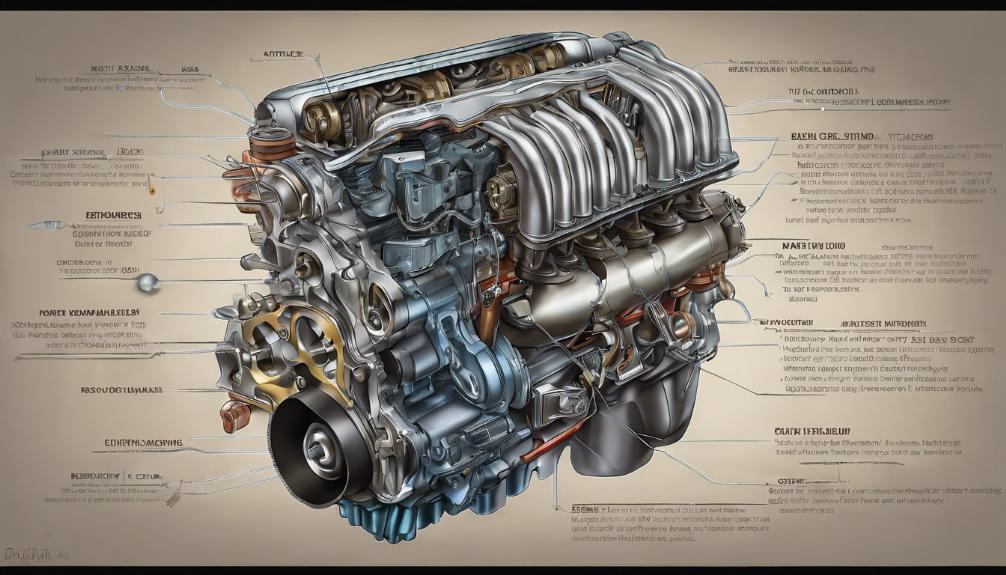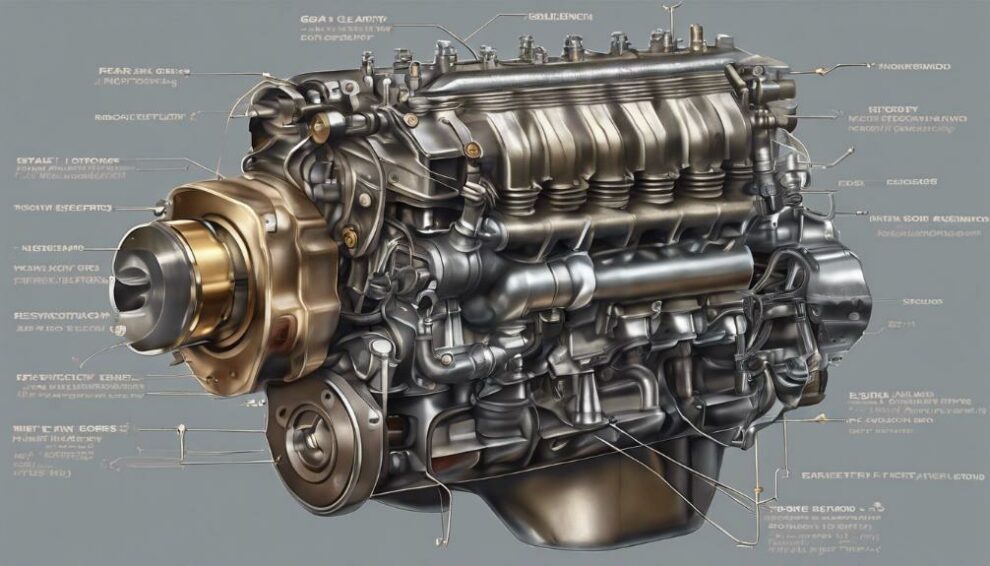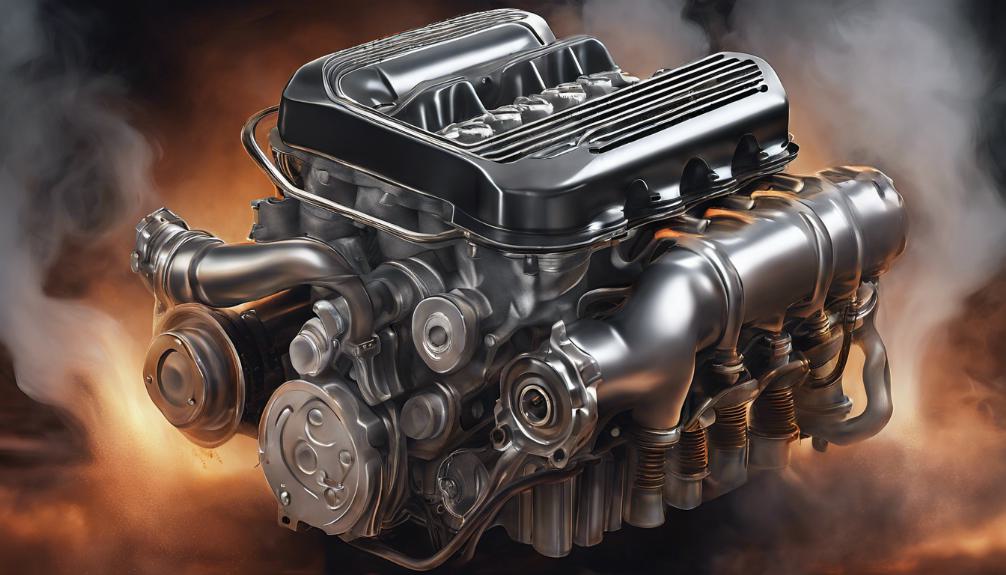Understanding The EGR Solenoid Function: A Comprehensive Guide
Ever wondered what the EGR solenoid does? Well, buckle up, because we're diving deep into the world of automotive engineering. The EGR solenoid function is a crucial aspect of your car's emission control system. It plays a vital role in reducing harmful emissions and improving engine efficiency. But how exactly does it work? Let's find out.
Picture this: you're driving down the highway, enjoying the wind in your hair (or not, depending on whether you have a convertible). Suddenly, your car starts acting funky—stalling, misfiring, or just generally being a pain in the neck. Chances are, the EGR solenoid might be the culprit. Understanding its function can save you from costly repairs and unnecessary headaches.
So, why should you care about the EGR solenoid? Well, aside from keeping your car running smoothly, it also helps protect the environment by minimizing harmful pollutants. In today's world, where sustainability is more important than ever, knowing how your car's emission control systems work is a big deal. Let's dive in!
Read also:Staffordshire Bull Terrier Dog Insurance Protecting Your Pup With Peace Of Mind
What is an EGR Solenoid?
The EGR solenoid, or Exhaust Gas Recirculation solenoid, is a small but mighty component in your car's engine system. Its primary job is to regulate the flow of exhaust gases back into the engine. This process helps reduce nitrogen oxide emissions, which are major contributors to air pollution. Think of it as your car's way of saying, "Hey, let's be eco-friendly!"
Here’s a quick breakdown of what the EGR solenoid does:
- Controls the flow of exhaust gases
- Reduces harmful emissions
- Improves engine performance
- Enhances fuel efficiency
Now that we know what it is, let's talk about how it works.
How Does the EGR Solenoid Function?
The EGR solenoid function is all about precision. It works by opening and closing valves that control the flow of exhaust gases. When the engine is under heavy load, the solenoid allows a portion of the exhaust gases to recirculate back into the intake manifold. This reduces combustion temperatures, which in turn cuts down on nitrogen oxide emissions.
Here's a step-by-step explanation of the process:
- The EGR solenoid receives signals from the car's computer system.
- Based on these signals, it opens or closes the valve to control gas flow.
- The exhaust gases are then recirculated back into the engine.
- This process helps maintain optimal engine performance while reducing emissions.
It's like a little traffic cop for your car's exhaust system, making sure everything runs smoothly.
Read also:Cem Karaca Spouse The Untold Story Of Love And Legacy
Common Issues with the EGR Solenoid
Like any other component in your car, the EGR solenoid can experience issues over time. Here are some common problems you might encounter:
- Clogged Valve: Over time, carbon buildup can cause the valve to get stuck, leading to poor performance.
- Electrical Failures: Faulty wiring or connections can prevent the solenoid from functioning properly.
- Leaking Gaskets: A damaged gasket can cause exhaust gases to leak, reducing efficiency.
If you notice any of these issues, it's a good idea to have your car checked by a professional mechanic. Ignoring these problems can lead to bigger headaches down the road.
Signs Your EGR Solenoid is Failing
Your car will usually give you some warning signs if the EGR solenoid is on the fritz. Here are a few red flags to look out for:
- Check Engine Light: This is often the first sign of trouble.
- Stalling or Misfiring: If your car stalls or misfires, the solenoid might be the culprit.
- Reduced Fuel Efficiency: A failing solenoid can cause your car to burn more fuel than usual.
- Increased Emissions: Higher levels of nitrogen oxide emissions could indicate a problem.
Don't ignore these signs! Addressing the issue early can save you a lot of money in the long run.
How to Test Your EGR Solenoid
Think your EGR solenoid might be acting up? Here's how you can test it:
Using a Multimeter
Grab your multimeter and follow these steps:
- Disconnect the solenoid from the car's electrical system.
- Set your multimeter to measure resistance.
- Touch the multimeter probes to the solenoid's terminals.
- Check the reading. If it's outside the manufacturer's specified range, the solenoid might be faulty.
It's a pretty straightforward process, but if you're not comfortable doing it yourself, don't hesitate to call in a pro.
Replacing the EGR Solenoid
If your EGR solenoid is beyond repair, it's time to replace it. Here's a quick guide on how to do it:
Tools You'll Need
- Socket wrench set
- Pliers
- Replacement solenoid
Step-by-Step Guide
- Disconnect the car's battery to avoid electrical shock.
- Locate the EGR solenoid, usually near the engine manifold.
- Unplug the electrical connector from the solenoid.
- Remove the bolts securing the solenoid in place.
- Install the new solenoid and secure it with the bolts.
- Reconnect the electrical connector and battery.
Voila! Your car should now be running smoother than ever.
Benefits of a Properly Functioning EGR Solenoid
A well-maintained EGR solenoid offers several benefits:
- Improved fuel efficiency
- Reduced emissions
- Enhanced engine performance
- Prolonged engine life
It's like giving your car a little tune-up that pays off big time in the long run.
Common Misconceptions About the EGR Solenoid
There are a few myths floating around about the EGR solenoid. Let's clear them up:
- Myth: The EGR solenoid is only important for diesel engines. Fact: It's just as crucial for gasoline engines.
- Myth: Removing the EGR solenoid improves performance. Fact: While it might give a temporary boost, it can lead to increased emissions and engine wear.
Always do your research before making any modifications to your car.
Tips for Maintaining Your EGR Solenoid
Here are a few tips to keep your EGR solenoid in tip-top shape:
- Regularly clean the valve to prevent carbon buildup.
- Follow the manufacturer's maintenance schedule.
- Address any issues promptly to avoid further damage.
A little preventative maintenance can go a long way in extending the life of your EGR solenoid.
Conclusion
In conclusion, the EGR solenoid function is a vital part of your car's emission control system. By understanding how it works and maintaining it properly, you can ensure your car runs smoothly and efficiently. Remember, if you notice any signs of trouble, don't hesitate to have it checked out by a professional.
So, what are you waiting for? Go out there and take care of your car's EGR solenoid. Your wallet—and the planet—will thank you for it. And hey, if you found this article helpful, don't forget to share it with your fellow car enthusiasts. Let's spread the knowledge!
Table of Contents
- What is an EGR Solenoid?
- How Does the EGR Solenoid Function?
- Common Issues with the EGR Solenoid
- Signs Your EGR Solenoid is Failing
- How to Test Your EGR Solenoid
- Replacing the EGR Solenoid
- Benefits of a Properly Functioning EGR Solenoid
- Common Misconceptions About the EGR Solenoid
- Tips for Maintaining Your EGR Solenoid
- Conclusion


